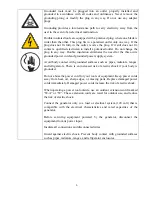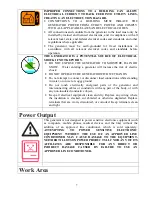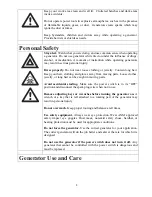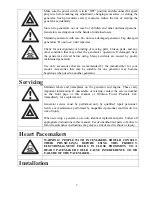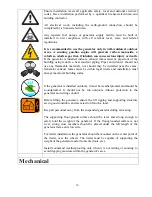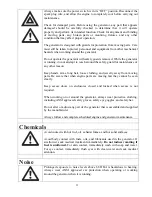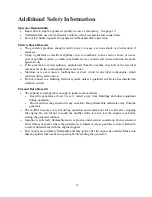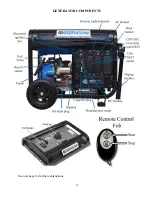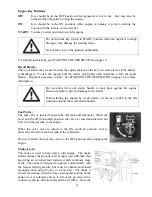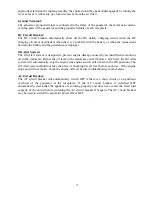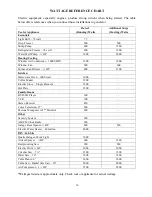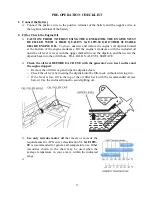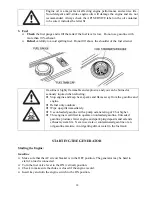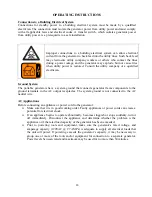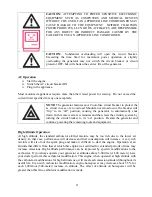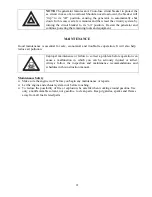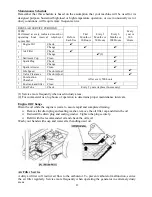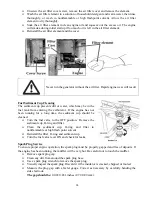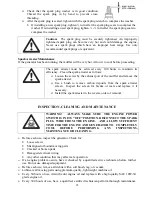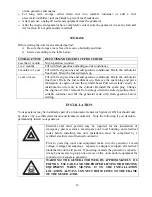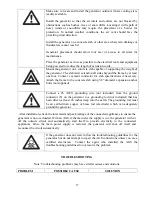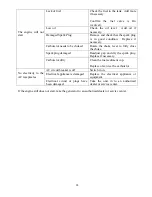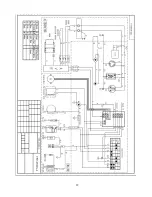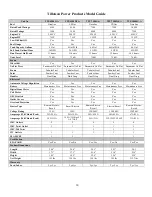
20
OPERATING INSTRUCTIONS
Connections to a Building Electrical System
Connections for standby power to a building electrical system must be made by a qualified
electrician. The connection must isolate the generator power from utility power and must comply
with all applicable laws and electrical codes. A transfer switch, which isolates generator power
from utility power, is a prerequisite to a safe installation.
Improper connections to a building electrical system can allow electrical
current from the generator to back feed into the utility lines. Such back feed
may electrocute utility company workers or others who contact the lines
during a power outage, and the generator may explode, burn or cause fires
when utility power is restored. Consult the utility company or a qualified
electrician.
Ground System
The portable generators have a system ground that connects generator frame components to the
ground terminals in the AC output receptacles. The system ground is not connected to the AC
neutral wire.
AC Applications
Before connecting an appliance or power cord to the generator:
!
Make sure that it is in good working order. Faulty appliances or power cords can create a
potential for electrical shock.
!
If an appliance begins to operate abnormally, becomes sluggish or stops suddenly, turn it
off immediately. Disconnect the appliance and determine whether the problem is the
appliance or if the rated load capacity of the generator has been exceeded.
!
Prior to powering tools and equipment, make sure the generator’s rated voltage, and
amperage capacity (120VAC @ 27 AMPs) is adequate to supply all electrical loads that
the unit will power. If powering exceeds the generator’s capacity, it may be necessary to
group one or more of the tools and/or equipment for connection to a separate generator.
Power levels between rated and maximum may be used for no more than 30 minutes.
Содержание TPP-4500G-A
Страница 13: ...13 GENERATOR COMPONENTS See next page for further explanations...
Страница 29: ...29...

